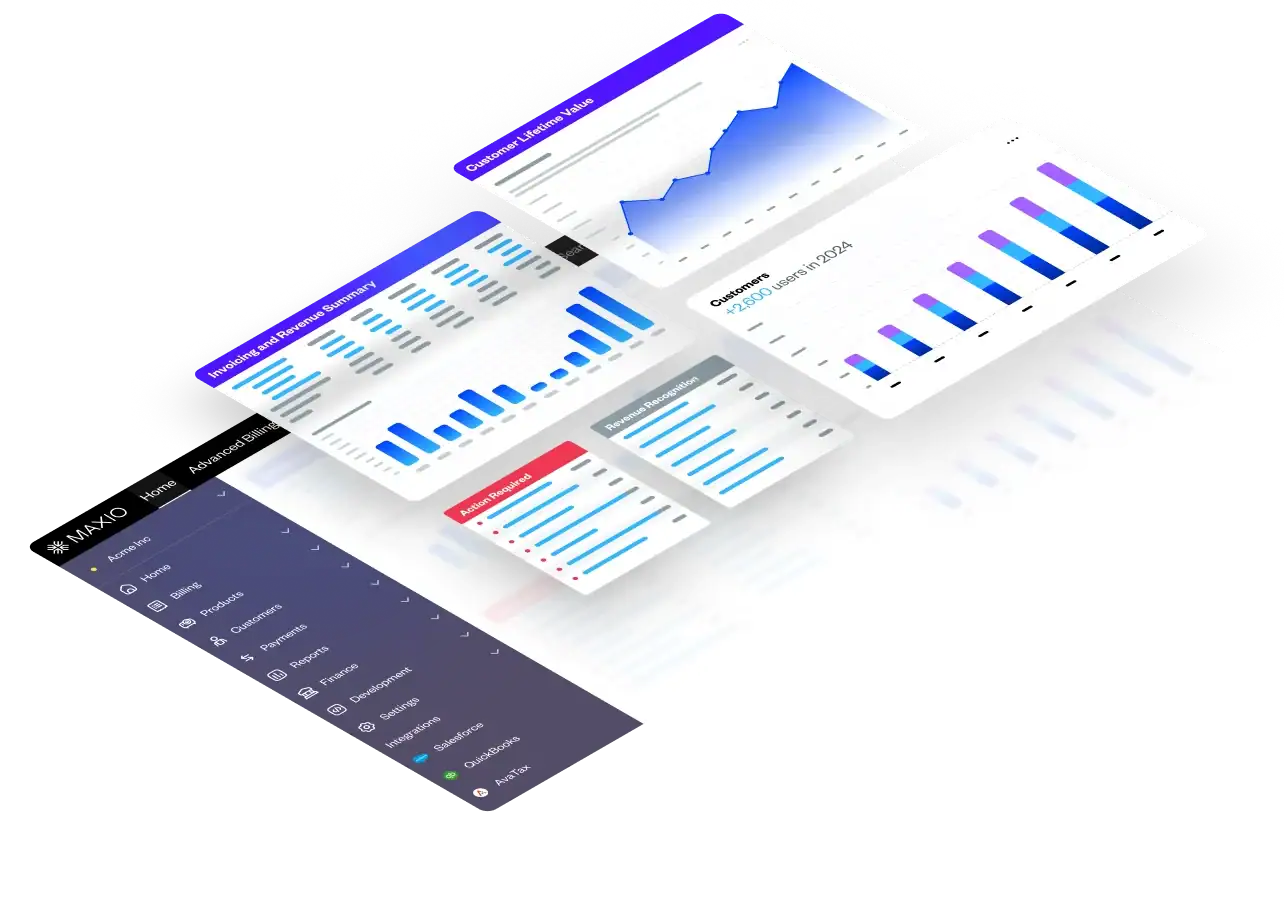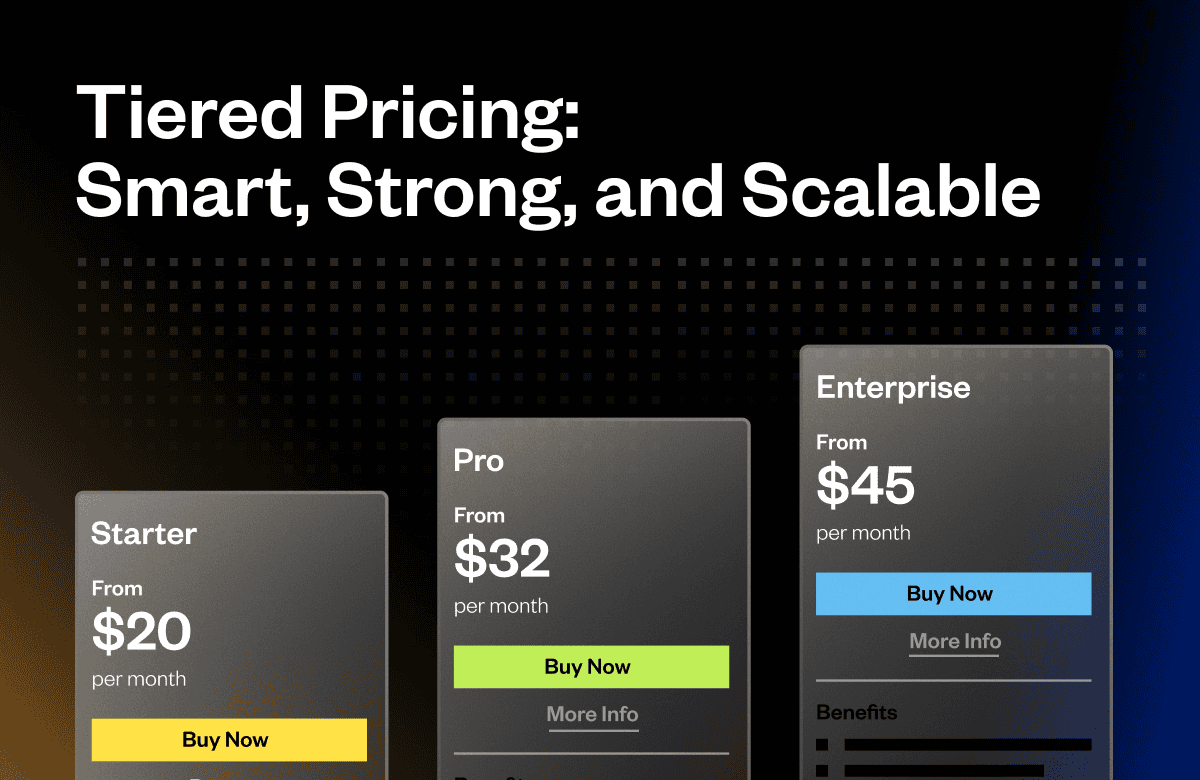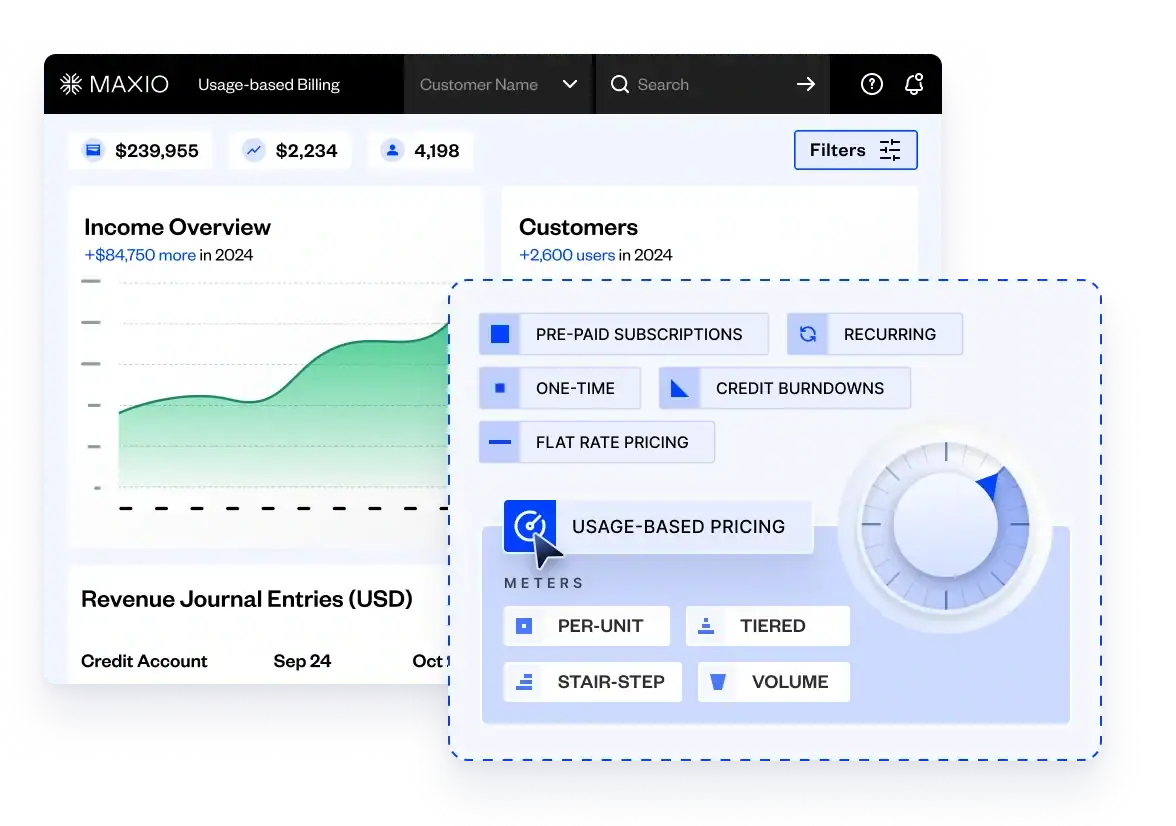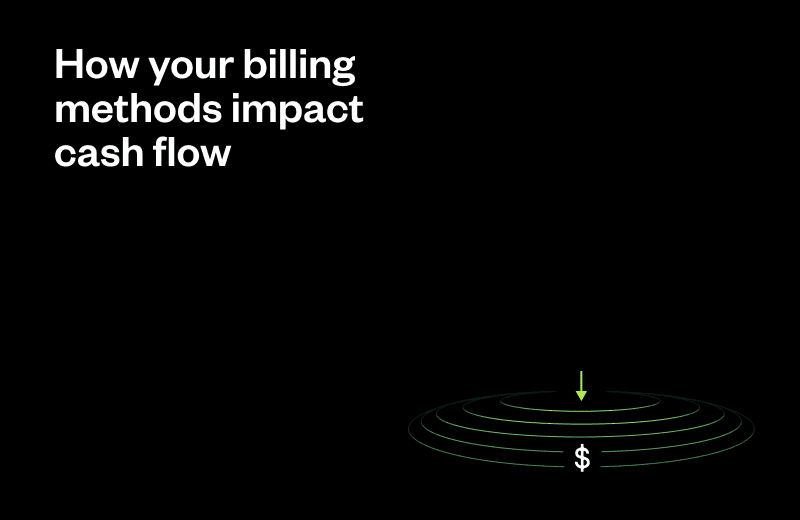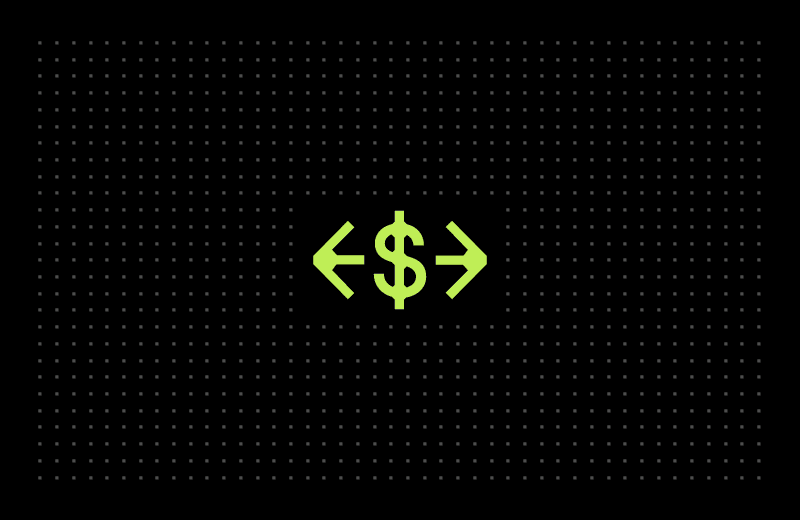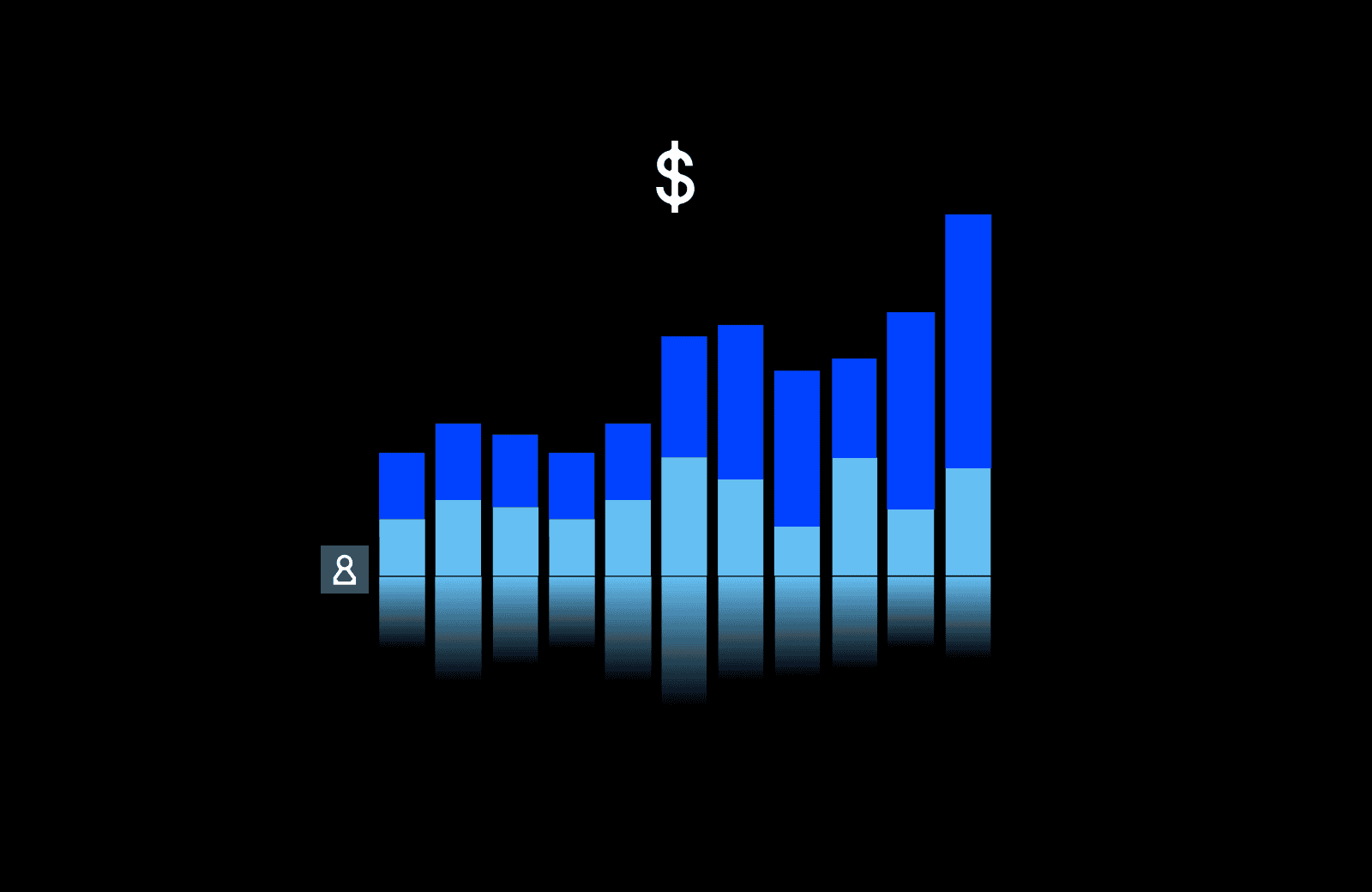Tiered pricing is a subscription billing model which offers several plans at a fixed price. Here’s how tiered pricing works and how to use it for your SaaS business.
What is tiered pricing?
A tiered pricing structure is a subscription billing model which offers several different price points. These plans, or “tiers,” are typically separated by features, number of users, or product usage. The first or most basic tier is usually offered at a lower price point and only includes basic features and functionality. In a tiered pricing model, by offering your product/service at a scaling rate, you increase the likelihood that potential customers will subscribe. From there, you can focus your efforts on upselling your customer base over time.
The tiered pricing model also acts as a competitive alternative to both fixed and value-based pricing models. A set price is easy to understand and appeals to customers looking for a plug-and-play solution. This model works best with software that isn’t overly complex. On the other hand, value-based pricing charges customers for specific product and feature usage, leading to highly complex pricing scenarios.
On a sliding scale from simple to complicated, the tiered pricing model sits right in the middle.
Benefits of tiered pricing in SaaS
Many SaaS companies use a tiered pricing model, and with good reason. The tiered pricing strategy works well for many SaaS companies. Here are four of the biggest advantages of offering different pricing tiers:
1. It attracts a wider customer base
Honing in on specific customer needs across various user types is one of the most essential elements of building a successful business. Different levels of pricing properly cater to various customer personas and their needs. A one-man startup needs fewer bells and whistles, while a full-blown team needs more advanced functionality. Offering a range of prices to meet each customer where they’re at is a great strategy for appealing to potential new customers.
2. Encourages upsells to higher pricing plans
Multiple pricing options give the users room to grow over time. While a customer may opt for a lower tier in the beginning, they may require different features as their business grows. When they’re ready, tiered pricing allows users to easily upgrade to the second-tier or higher level options to access the functionality their business needs.
3. Maximizes customer retention and revenue potential
Should times get tight for your users and business owners feel the need to start cutting costs, subscription services are often easier to cut down on than personnel or utility costs. In this instance, offering different tiers gives users the option to downgrade based on their needs without needing to look elsewhere for a new solution. These choices decrease the odds of customers having to create a new solution, or worse, moving to a competitor.
On the other hand, when business is good, tiered pricing motivates users to upgrade to the next tier to save money. For example, volume discounts available on a higher tier give more users access and typically offer a wider variety of different features.
4. Eases revenue and cashflow predictions
Once a SaaS company starts building its customer base, it can more accurately forecast its revenue. Since customers don’t have to leave if they grow rapidly (because they can move up a tier) or hit an obstacle that temporarily sets them back (because they can go down a tier), financial predictions become more accurate.
How is tiered pricing calculated?
There’s not much differentiation between the pricing of each individual tier and any other product or service.
First, you must calculate how much a product takes to develop and maintain. Second, add a small percentage markup to determine your price range. Third, you should also account for pricing changes that will occur as your company scales and overhead increases. Conducting regular pricing experiments and reiterating your pricing strategy once every 1-2 years ensures that you’re capturing the full value of your SaaS while planning for changing market conditions.
Adjust each pricing tier for the features and functionality they offer. To start, calculate the pricing of your most advanced or premium tier. This plan usually includes the greatest access to product features, functionality, and customer support, such as 1:1 onboarding assistance, etc.
Once the most expensive plan has been calculated, work backward until you reach the “basic” plan. This tier is also commonly referred to as “entry-level” pricing because it’s where most customers will start with your product.
Tiered pricing vs. volume-based pricing
Tiered pricing and volume-based pricing don’t share much in common. With volume-based pricing, when specific unit volume thresholds are reached, the price per unit goes down. In other words, the more you buy, the less you pay per unit.
For example, let’s say a SaaS provider is selling cloud storage space. In a tiered pricing model, for the first 50 TB a month, space costs 15 cents per GB, but after 50 TB, the price for each additional GB drops to 12 cents. In contrast, with a volume pricing model, if you purchase up to 50 TB a month, you pay 15 cents per GB. If you purchase more than that, you pay 12 cents for all GB, including the first 50 TB of GB.
Common variations in tiered pricing models
Tiered pricing lets companies offer plans that meet different customer needs. Most models include at least two tiers, but the number of tiers and how they’re structured can vary widely.
How many tiers to offer
2-tier pricing
A two-tier pricing model includes just two plan options. This setup keeps things simple and clear—customers choose between a basic option and a more advanced one. It can work well for smaller SaaS companies or products with clear feature splits.
3-tier pricing
A 3-tier pricing model offers three plan levels that typically progress from a low-cost option to a more premium package. These are often labeled following a Good, Better, Best type pattern, such as Basic, Standard, and Premium plans, where the more expensive tiers provide access to more features and/or support options. This structure helps guide customers toward a plan that fits their needs without overwhelming them.
Multiple-tier pricing
Multiple-tier pricing includes more than three pricing levels. This is common for companies with a wide range of customers, from small businesses to large enterprises. Each tier is built with a different set of limits or features, helping customers find a plan that matches their size, goals, or budget.
What to base your tiers on
Usage-based tiers
These tiers depend on how much of the service a customer uses. Metrics might include emails sent, API calls made, or data stored. As usage increases, customers move into higher-priced tiers that reflect the added value they’re getting from the product. Many companies utilize usage-based billing software to manage this type of pricing automatically, ensuring accurate tracking and billing as customer needs change. This model is especially useful for SaaS businesses with variable customer needs, allowing users to start small and scale naturally.
Feature-based tiers
Feature-based pricing is built around the tools or functionality available at each tier. Lower tiers usually include core features, while higher tiers unlock advanced functionality and a higher level of service. This approach helps users avoid paying for extras they don’t need and gives them a reason to move to a plan with a higher price as their business grows.
User count tiers
These tiers are based on how many users need access to the service. The more users a company needs to onboard, the higher the tier they’ll fall into. This model works well for tools designed for collaboration, like project management software or team platforms.
Tiered pricing examples from well-known businesses
Sometimes it’s easier to understand a concept by looking at real-world examples of it. So let’s put the spotlight on some popular businesses that use different types of tiered pricing.
Zendesk
Zendesk uses a three-tiered pricing model that centers on product features. Zendesk’s non-enterprise tiers for smaller businesses currently include:
- A Team level for $49 per agent per month billed annually
- A Growth level for $79 per agent per month
- A Professional level for $99 per agent per month

Crazy Egg
Website optimization tool Crazy Egg uses a multiple-tier pricing model.
- A Basic level for $29 per month
- A Standard level for $49 per month
- A Plus level for $99 per month
- A Pro level for $249 per month
- An Enterprise level with pricing based on customer needs
It’s important to note that Crazyegg’s enterprise plan is specifically built to cater to customers whose needs far exceed the functionality and support of a pre-built tier. Offering an enterprise tier allows them to negotiate their pricing and foster stronger customer relationships with larger accounts that require 1:1 support.
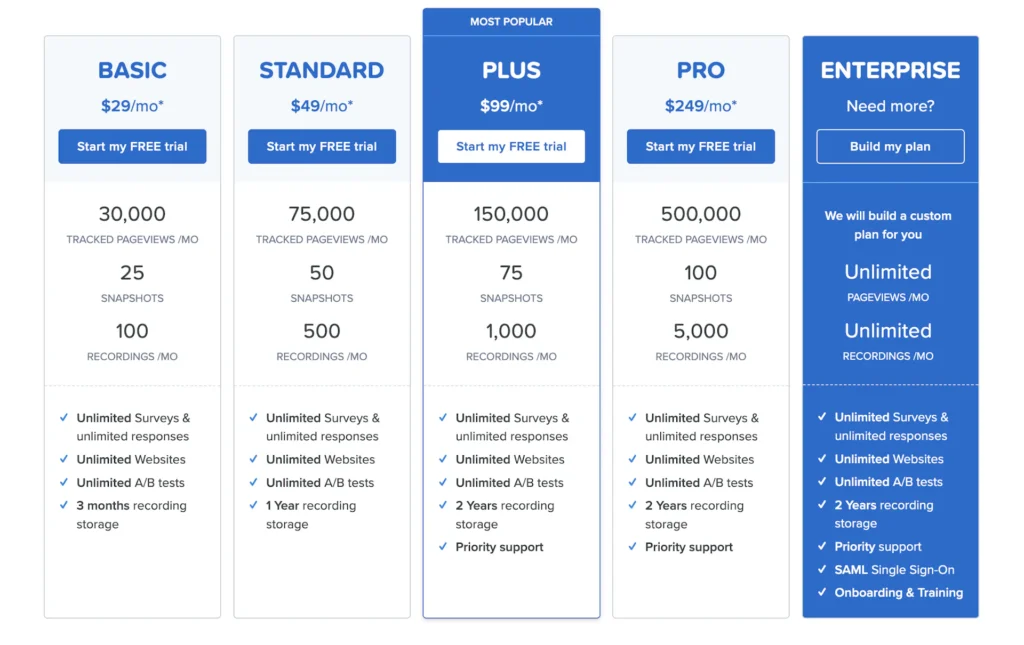
Mailchimp
Email marketing automation company Mailchimp sets their tiers up based on usage.
- A Free level that gives a user 1000 email sends per month
- An Essentials level for $13 per month (which includes 5,000 email sends)
- A Standard level for $20 per month (including 6,000 email sends)
- An Enterprise level that starts at $350 per month and includes up to 150,000 monthly email sends

Canva
Canva is a design website that helps everyone create professional-looking marketing material. Its pricing tier structure is both user-count and feature-based.
- Canva Free provides users with a short list of great features that help them design all types of professional marketing collateral
- Canva Pro, at 12.99 per month for one person, adds more features to a user’s disposal, such as more access to Pro templates and storage.
- Canva for Teams, at $14.99 per month and including up to five users, is the highest tier and adds features to help businesses scale like brand controls, design approval workflows, and more AI-powered design tools
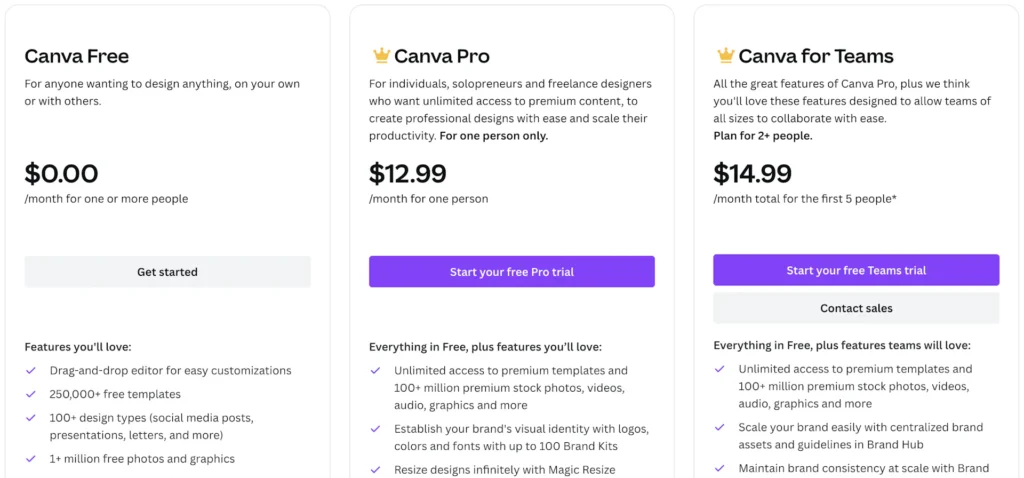
Microsoft 365 Business
Companies of all sizes across all industries use Microsoft 365 to improve organization and productivity. Its tiered pricing is user-based, but also provides several additional features as the tiers climb higher.
- Microsoft 365 Business Basic costs $6 per user, per month
- Microsoft 365 Business Standard costs $12.50 per user, per month
- Microsoft 365 Business Premium costs $22 per user, per month
- Microsoft 365 Apps for Business costs $8.25 per user, per month
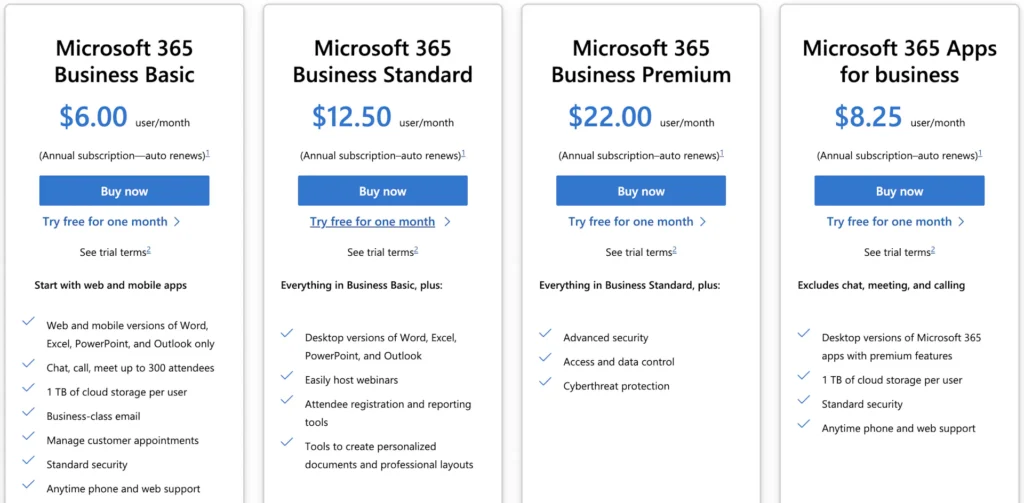
How to set your tiered pricing strategy
While there are many exciting advantages of using tiered pricing, it can be challenging to implement. Add to that how critical it is to use the right one, and it becomes a hugely important decision.
This decision can be made easier by gathering three essential elements that provide insight into how to structure your pricing for optimal performance.
Develop tiers with customer personas in mind
Organizations can’t arbitrarily build pricing tiers without taking their customers into account. They should think about their ideal customer profile (ICP) and pinpoint:
- The industries they’re in
- What size they are
- What their priorities are
- What their pain points are
- Who makes the final decision
- How much their budgets will support
Taking the time to pull this data together gives companies a deeper understanding of their target market and what they will look at as reasonable pricing. It also makes it easier to implement a pricing model that’s both flexible and scalable, especially when supported by automated recurring billing that adjusts as customer needs evolve.
Clearly distinguish differences between tiers
While it’s smart to have consistency in every tier, make sure you’re clearly differentiating one tier from the next, again with your ICP in mind. You need to have a solution that meets the needs and price point of as many potential customers as possible. When browsing your pricing tiers, customers should be able to quickly see what they will receive with each level, along with the unique value proposition each plan offers.
Price your tiers carefully
Like anything else, be sure to consider the usual factors when pricing your subscription tiers, such as the cost of goods sold. You’ll also want to consider what your competitors are pricing their tiers at, as your potential users will likely be looking at competitors’ rates while considering yours. Finally, take what you know about your customer and figure out the perceived value of your product from their point of view. If you’re using a subscription billing software, choose a solution that lets you easily test and optimize your pricing over time.
The stakes are high in figuring out a workable pricing structure. Set the price even a bit too high, and the company may lose out on conversions that would have helped it grow. Further, future coupons or price reductions may be seen as devaluing the brand. Set the price too low, and you lose out on valuable revenue per customer and will have an uphill battle in slowly raising prices so as not to upset existing customers. The moral of this story: Be sure to very carefully consider all aspects surrounding your pricing strategy, possibly testing them out with test users, before launching.
Download the ebook: Data-driven Pricing Strategies
In this ebook, you’ll learn how to optimize your pricing strategy based on customer insights and analytics.
Metrics for SaaS tiered pricing
Like any other pricing model, tiered pricing needs to be tracked with SaaS reporting tools and analyzed to ensure it’s profitable and meets your customers’ needs. For tiered pricing, expansion and upgrade MRR should be your performance benchmark.
Why? Because they align with the strategy behind a tiered pricing model, which focuses on getting users to pay more overtime via upgrades, add-ons, and upselling. In other words, it’s all about monetization.
Measuring the additional MRR generated through feature add-ons and pricing plan upgrades gives SaaS companies a quick snapshot of how well their pricing tiers are performing. For example, if you see a positive correlation between revenue and acquisition but not between revenue and monetization, this is a clear sign that one of two things are happening:
- Users are receiving too much value from your basic plan and don’t need to upgrade
- Users aren’t receiving enough value from your basic plan and don’t want to upgrade
Both of these problems are easy to identify within a tiered pricing model if you’re tracking revenue increases via expansions and pricing plan upgrades.
Build your perfect pricing model with Maxio
Maxio lets you customize your billing to find that perfect balance between what you and your customer need. Deploy a range of pricing models—including both tiered and volume-based pricing—and mix-and-match as you need to create the pricing model for your business. Request a demo to see how you can turn your billing into a competitive advantage.
